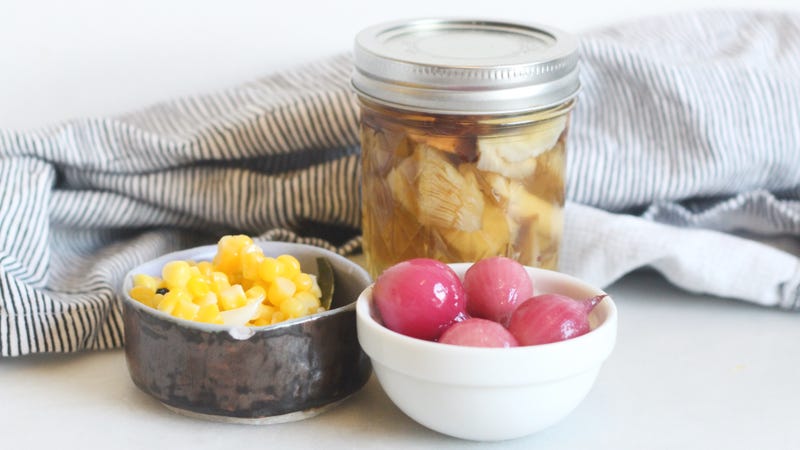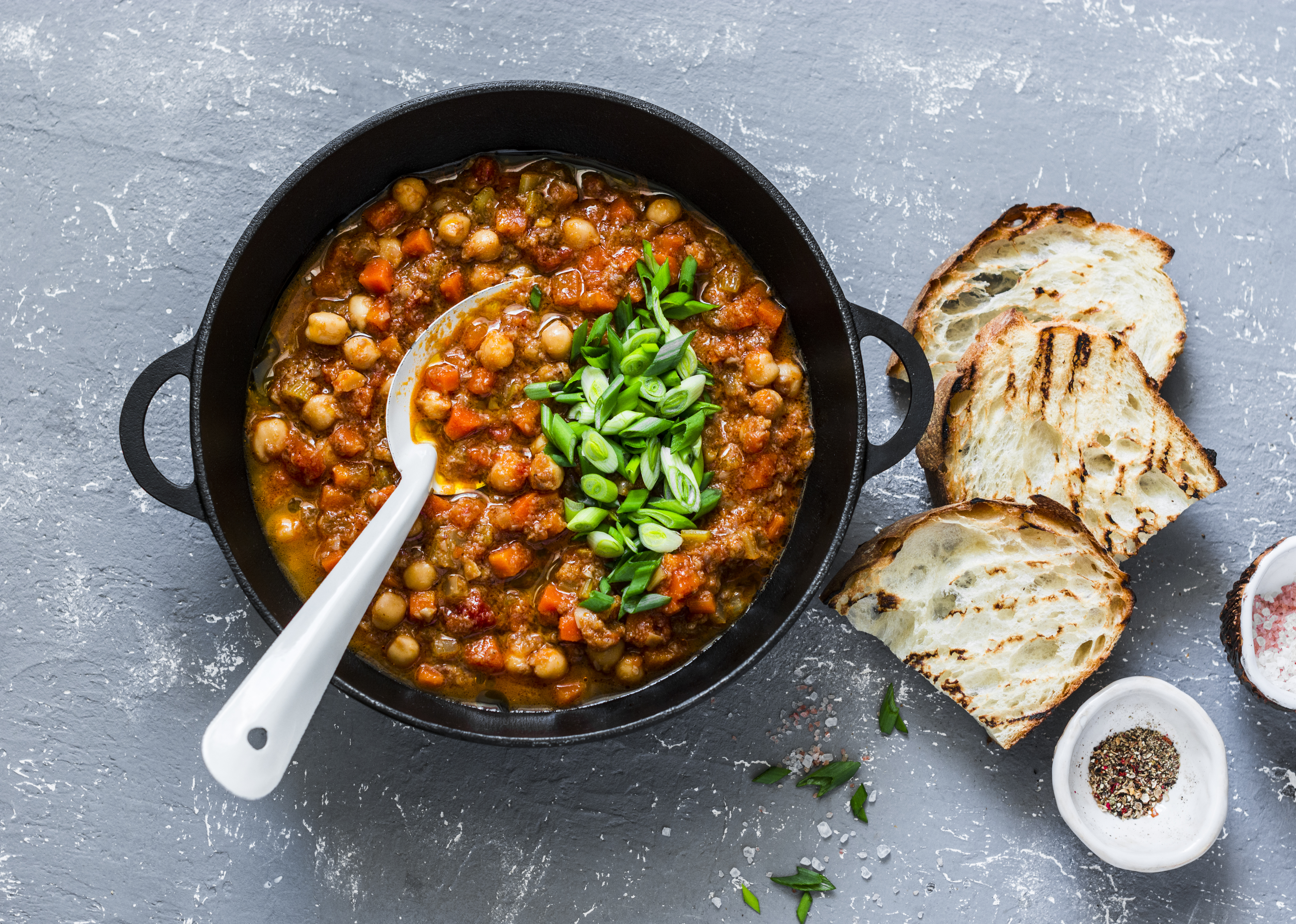Pickling is, first and foremost, a way to preserve food, but unless you have a fruitful (vegetableful?) garden, you most likely see it as a way to make plant parts tangy and delicious. This is most commonly done with fresh vegetables, but if the vegetable you desire isn’t in season, you can (probably) use frozen.
Frozen corn, for example, pickles just fine, as does canned; and frozen pearl onions pickle even better than their fresh counterparts. Frozen broccoli not so much. You see, when water freezes, it rearranges itself into a crystalline structure that takes up more space than its aqueous form, effectively “stretching” the cellular walls of the vegetable. (This is also why meat gets mushy if you freeze it more than once, all that expanding and contracting makes the cell walls sad.)
Pickled vegetables are supposed to be a little soft anyway, so this expansion isn’t necessarily a bad thing. When I did a side by side comparison of pickled pearled onions, I found I preferred the pickles made with frozen onions, as fresh ones were still quite tough and pungent after pickling (especially in the center). Pickled corn made with frozen stuff came out a little softer than fresh, but only slightly, and the sweet and tangy flavor was pretty much the same. Pickled frozen mushrooms are also quite good, but all preserved mushrooms are soft to begin with.

Photo: Claire Lower
A good rule of thumb is to avoid those frozen vegetables that can skew towards mush when cooked. Frozen broccoli is a bad candidate for pickling (the fluffy part gets so soggy!), as are green beans (but that can vary depending on how they’re cut). Frozen beets, on the other hand, would pickle just fine.
Once you’ve picked a peck of frozen plants, pickle it how you would any other vegetable. Place your frozen vegetables in a heat-safe jar—there’s no need to thaw. Make a brine—I like this one—and heat it in a sauce pan until the salt and sugar dissolves, then pour it over your vegetables. Let it sit until it’s cool to the touch, then chill in the fridge overnight. Use as you would any other pickle (put it on everything).
This article was written by Claire Lower on Skillet and shared by Claire Lower to Lifehacker from Lifehacker and was legally licensed through the NewsCred publisher network. Please direct all licensing questions to legal@newscred.com.







